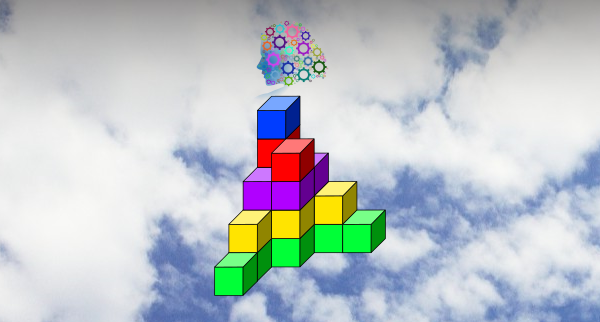From 64KB to 4GB: The Evolution of Processing Memory and Its Impact on Technology
In today’s discussions about technology, AI often takes centre stage as a marvel of innovation. Yet, amidst this fascination, it’s worth considering the evolution of two fundamental components: the central processing unit (CPU) clock rate and the size of processing memory. It’s the latter, the growth in processing memory size over the years, that has captured my attention and prompts this commentary.
While the genesis of the personal computer in the early 1980s might seem like a logical starting point, I find it necessary to backtrack by a decade. The humble beginnings of computing with the Apollo mission represent a remarkable technological feat. The Apollo Guidance Computer (AGC), instrumental in landing humans on the moon, had a very limited amount of memory by today’s standards. The primary computer used in the Apollo spacecraft boasted only 64 kilobytes (KB) of Random Access Memory (RAM) and 4 kilobytes (KB) of Read-Only Memory (ROM).
Considering the technological constraints of the late 1960s, this amount of memory was quite impressive and marked a significant engineering achievement. Despite its modest capacity compared to modern computers, the AGC performed complex calculations and executed mission-critical tasks with extreme reliability and precision.
Now, compare this to the RAM size of the smartphone you carry. For most common smartphones with screen sizes ranging from 4″ to 6.5″, a rough estimate places their RAM between 4GB to 8GB. Flagship models often feature even higher RAM capacities, sometimes reaching 16GB or more. Let’s focus on the lower end of 4GB RAM for now, but feel free to scale up based on your device’s specifications.
The leap from the AGC’s 64KB RAM to the 4GB RAM in lower-end smartphones represents a binary exponential increase of 2^16, or a whopping over 64,000 times (adjust this figure according to your RAM size). This vast difference underscores the incredible advancements in technology over the past few decades.
Reflecting on this journey, it’s remarkable to see how far we’ve come in terms of computing power and memory capacity. From the limited capabilities of the Apollo missions to the computing prowess we carry in our pockets today, it’s a testament to the rapid pace of innovation and the transformative impact of technology on our lives.
Today, even a simple birthday card (at sub $3 cost as far back as about 4 years ago), equipped with an integrated music synthesizer chip and powered by a cheap watch battery and low-fi piezoelectric speaker, likely surpasses the AGC’s memory capacity. Fast forward to the early 1980s when the Personal Computer (PC) was designed, with a working RAM of 640KB. At that time, the notion that “640K ought to be enough for anybody,” often attributed to Bill Gates (though he denies ever saying it), encapsulates the short-sightedness that can accompany technological innovation.
As a sidenote, the quote serves as a reminder of the limitations of our foresight, even among visionaries like Gates. It’s a cautionary tale for anyone involved in technology or innovation, highlighting the importance of anticipating future needs and allowing for scalability and flexibility in design. In hindsight, the idea that 640K would be sufficient for all computing needs seems laughable, given the memory-intensive applications and processes we use today. It underscores the rapid pace of technological advancement and the need to continually reassess and adapt to evolving requirements.
Today, a modern PC typically boasts between 8GB to 64GB of RAM and beyond, catering to increasingly demanding tasks such as content creation, gaming, and professional applications. This exponential increase in processing memory sizes parallels the broader evolution of technology. This is even without touching upon server technologies, where capacities soar into the terabytes to support vast databases and power intensive AI applications on a scale far beyond what individual PCs can handle. Just envision the stark contrast between the nostalgic 64KB and the colossal terabytes (TB) powering servers today!
In conclusion…
This commentary reflects on the ongoing march of progress in processing memory technology and its pivotal role in the digital revolution. From the nostalgia of early computing limitations to the era of multi-gigabyte memory capacities, memory evolution continues to drive technological advancement, shaping our world and unlocking new possibilities.
This progression from the tiny 64KB to the massive at a minimum of 4GB RAM for smartphones offers valuable insights into the potential achievements, particularly in fuelling AI and machine learning algorithms. While we admire one facet of technological progress, it’s important not to overlook the pivotal role of the CPU (which could be the subject of another commentary) in managing processing memory.
















0 Comments